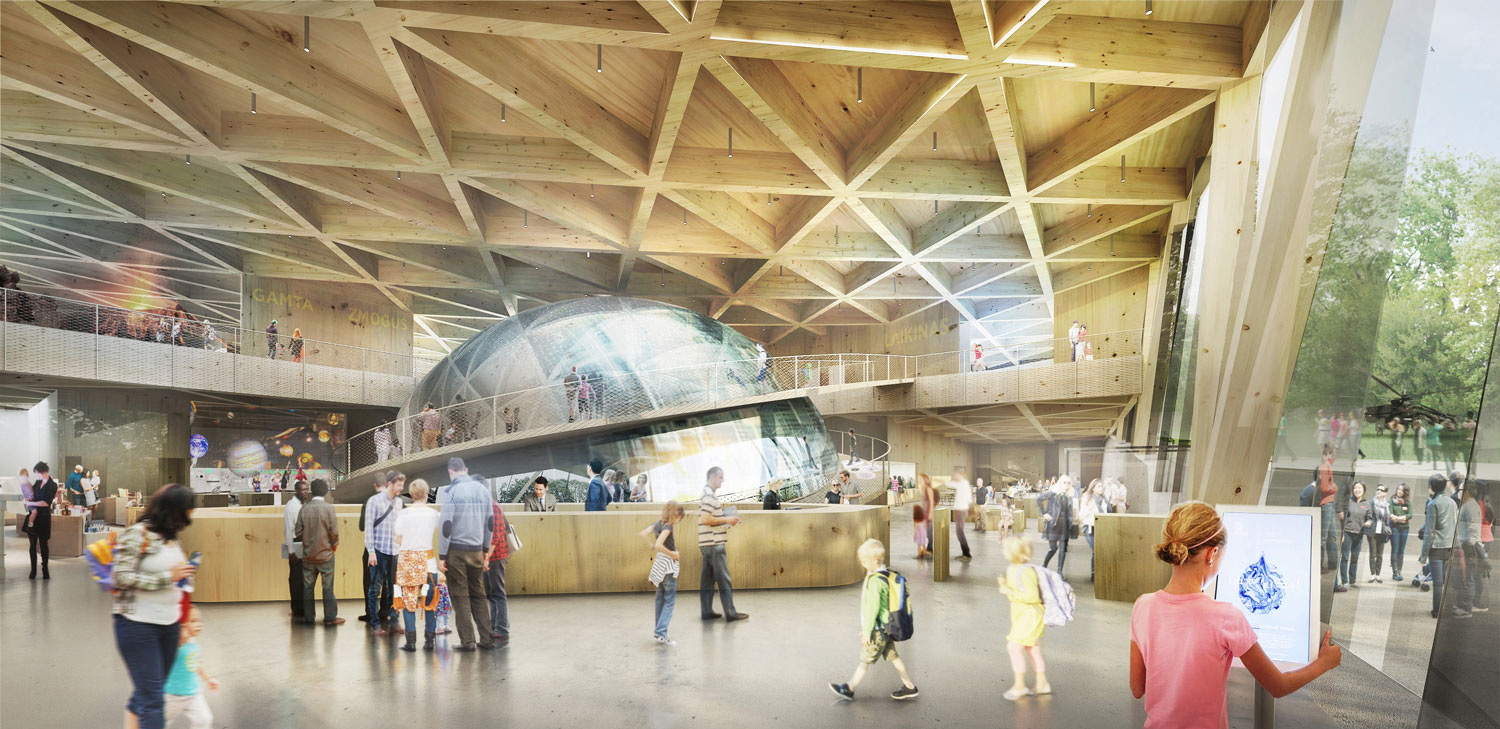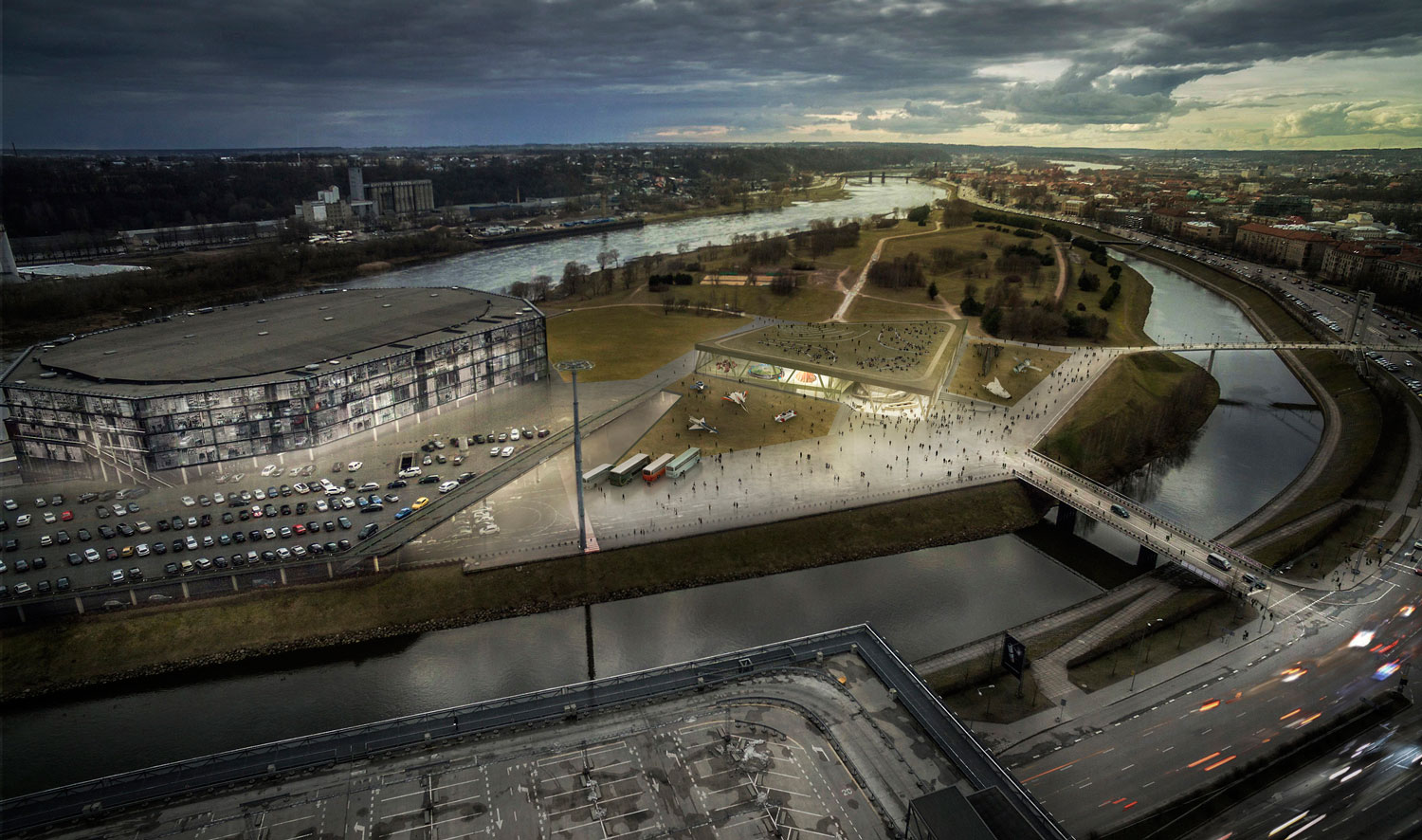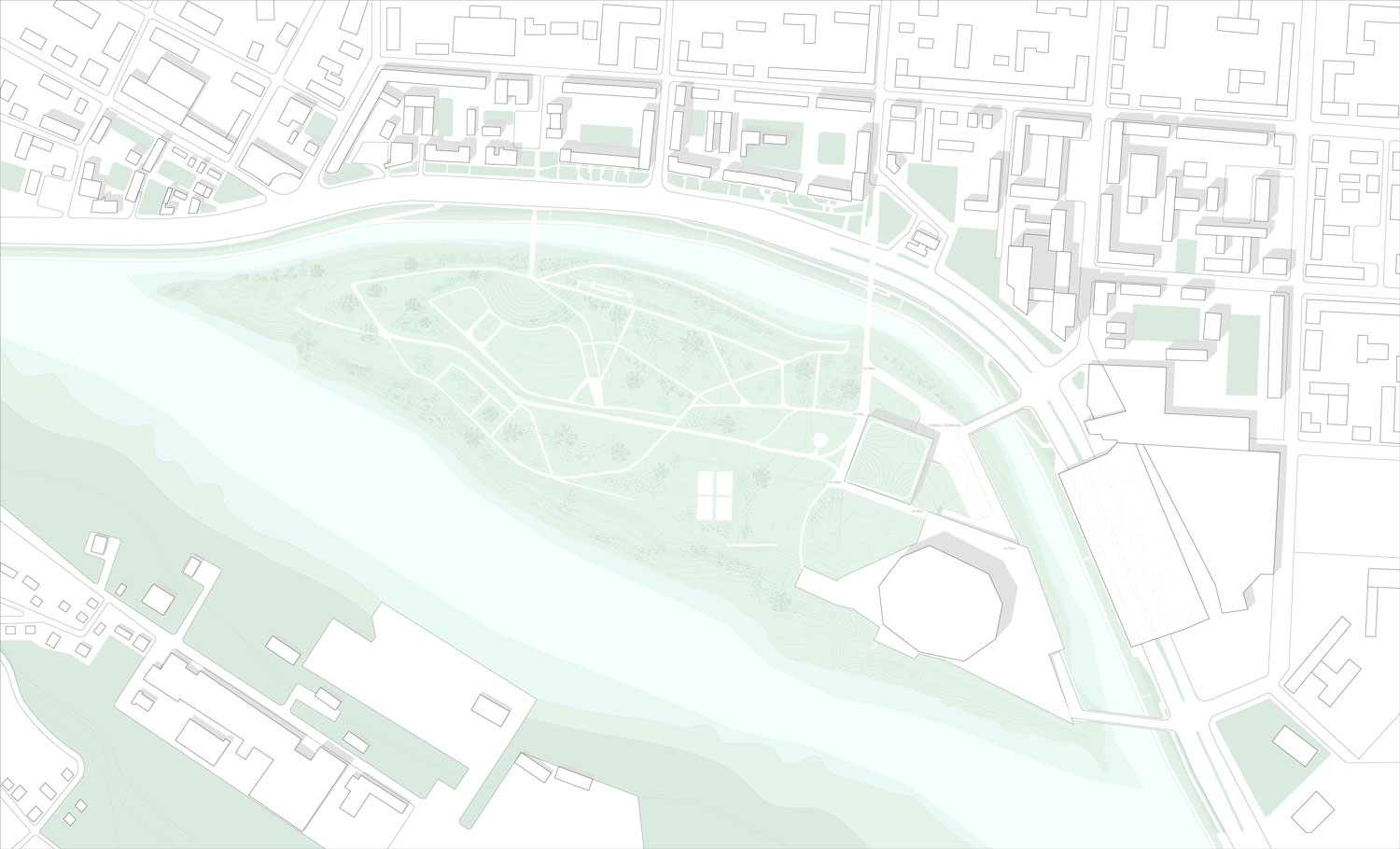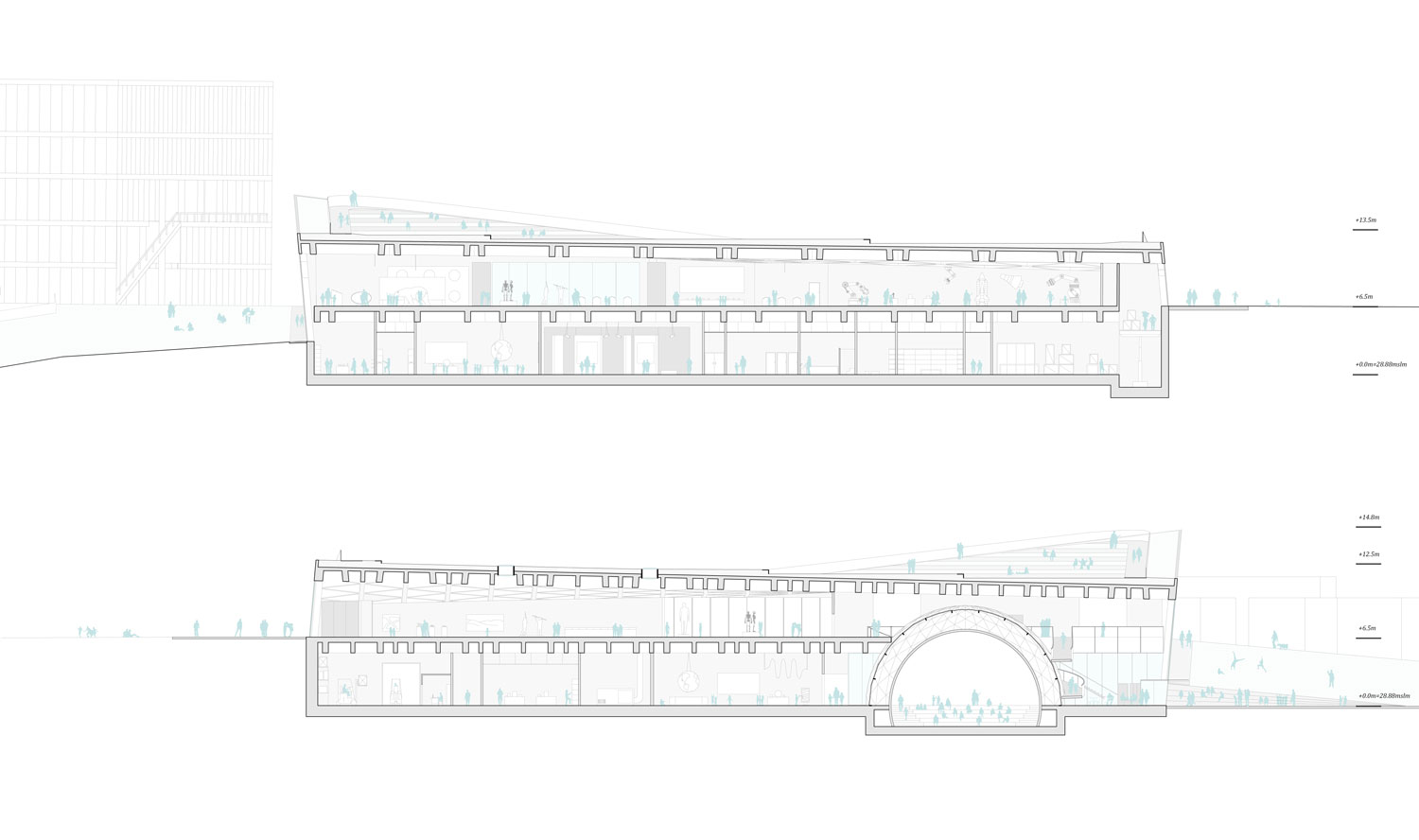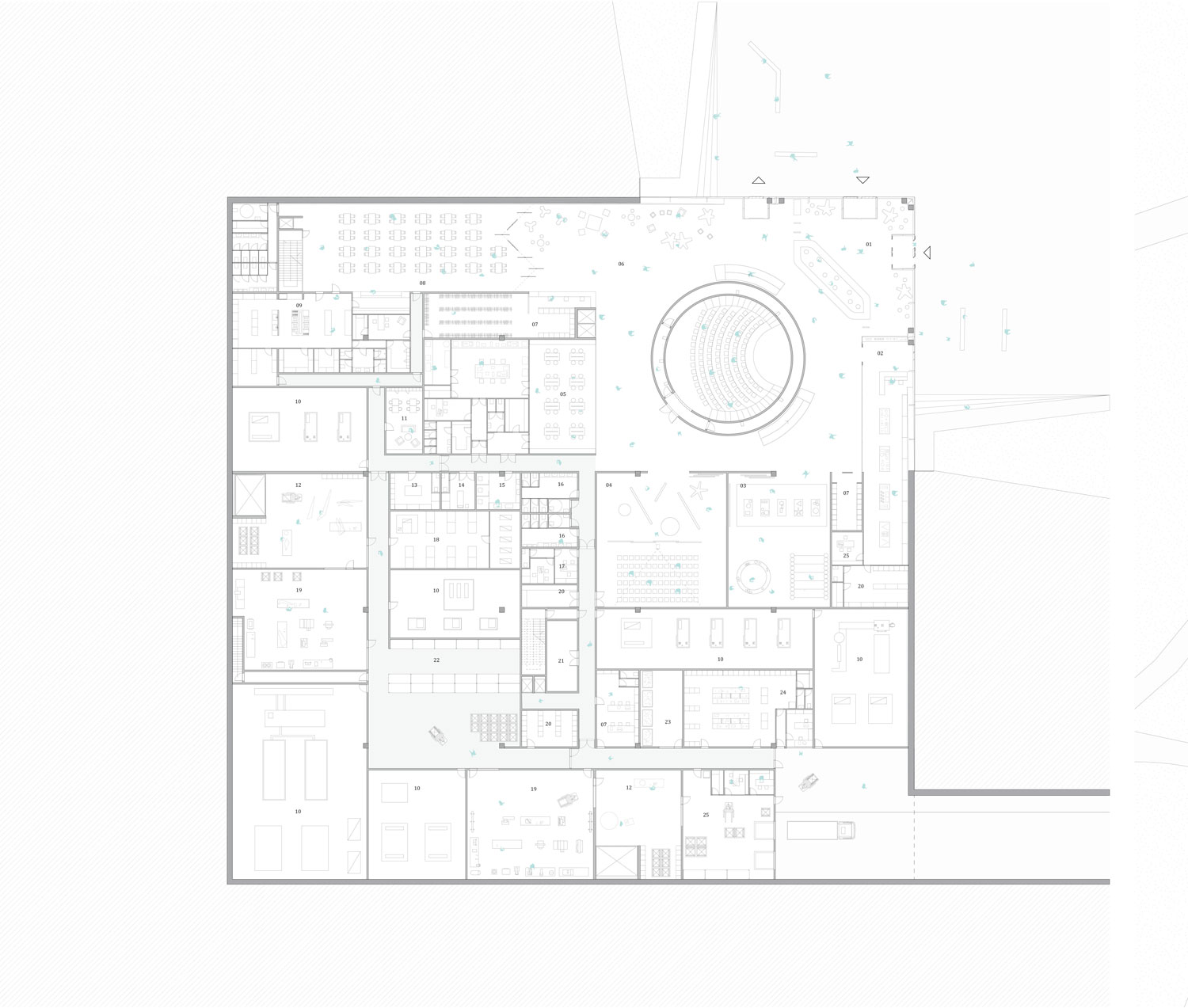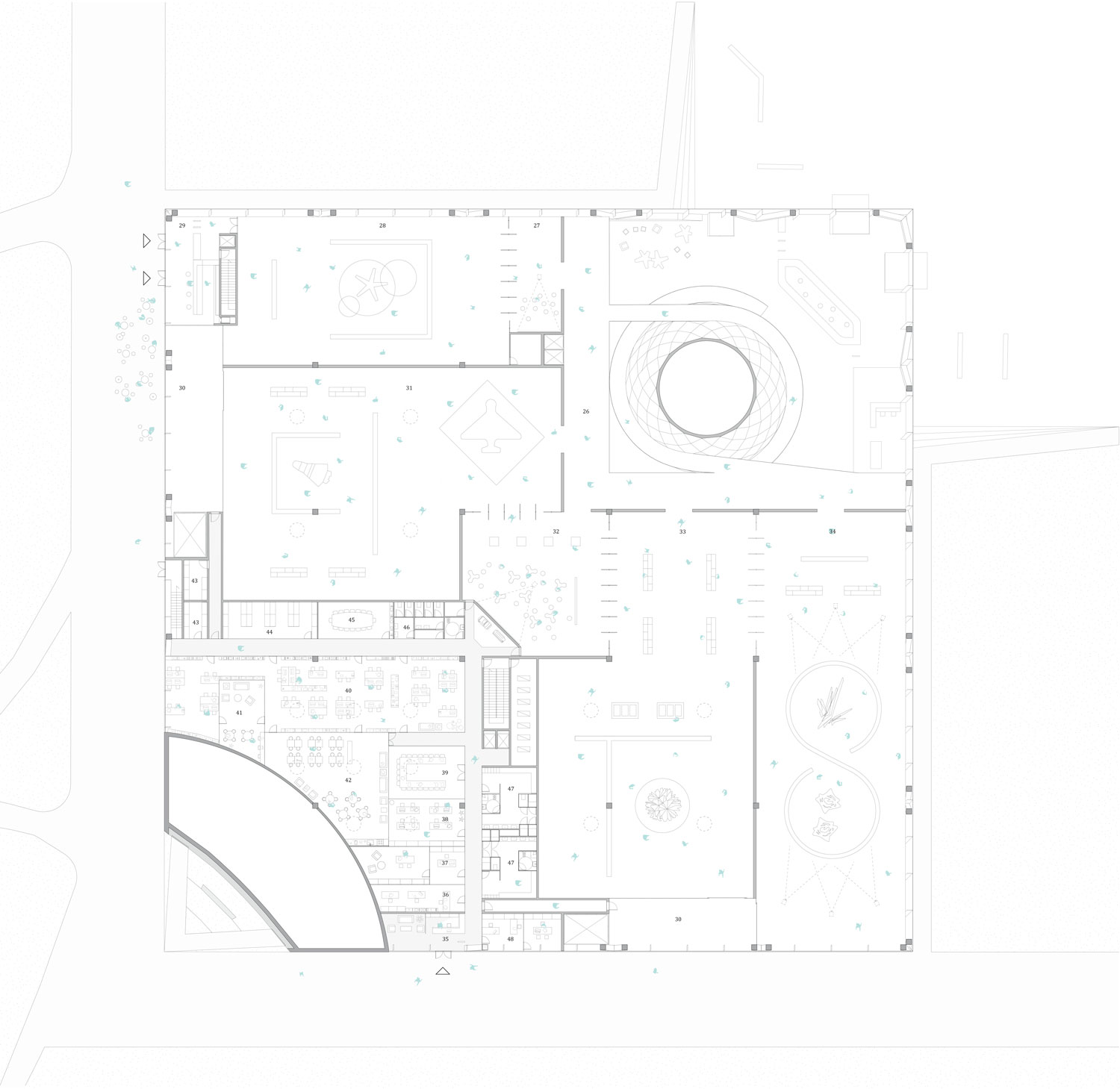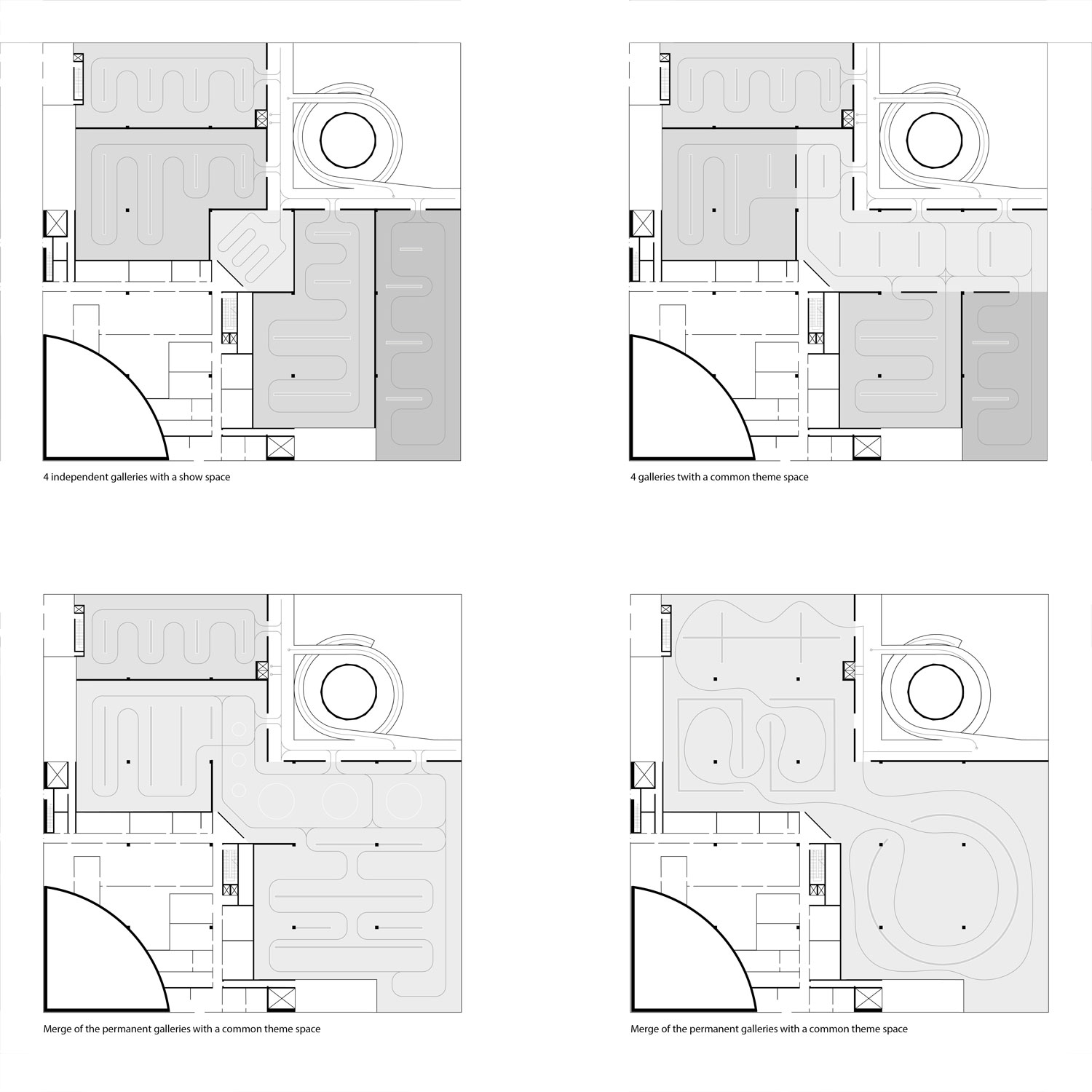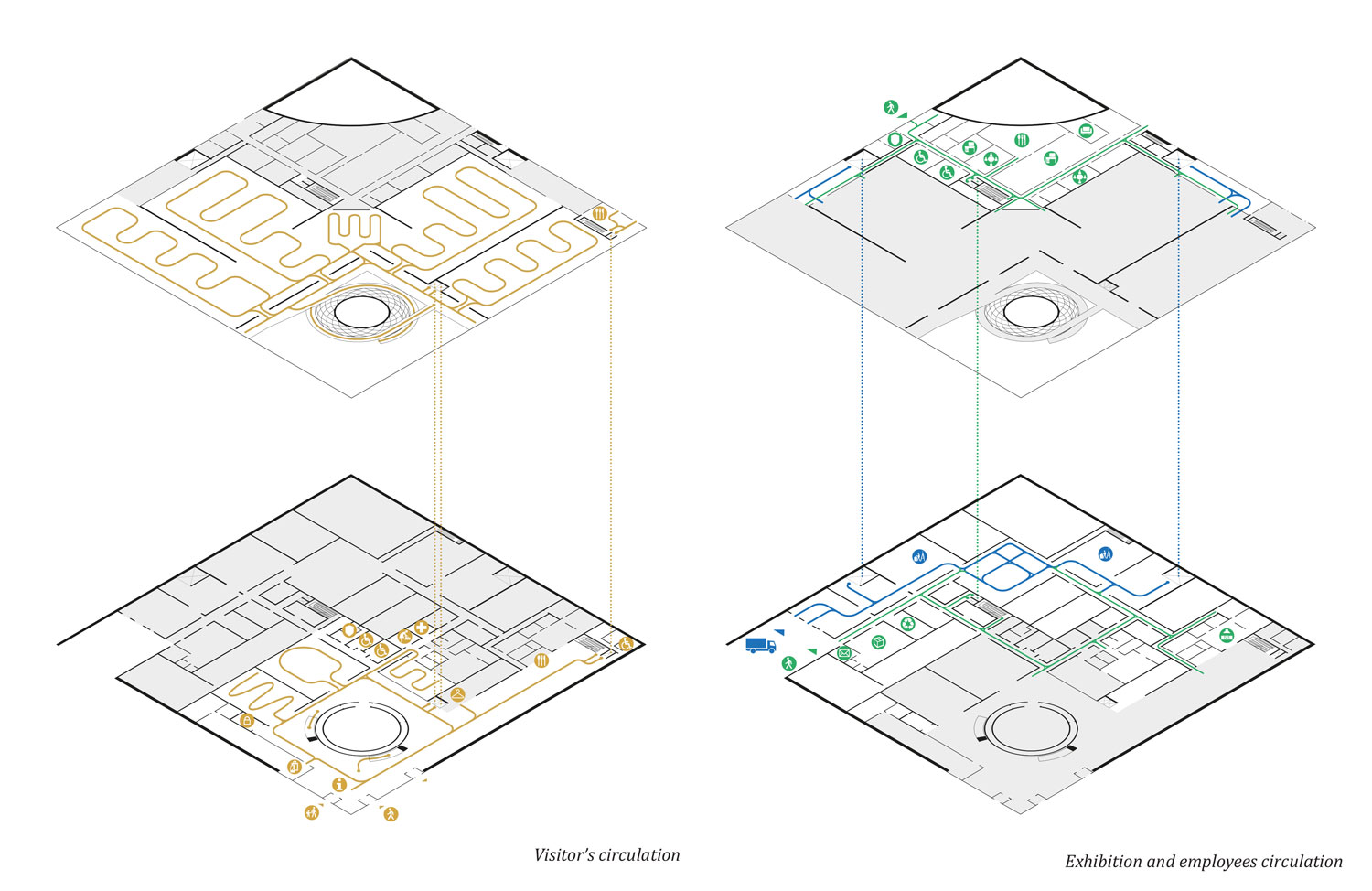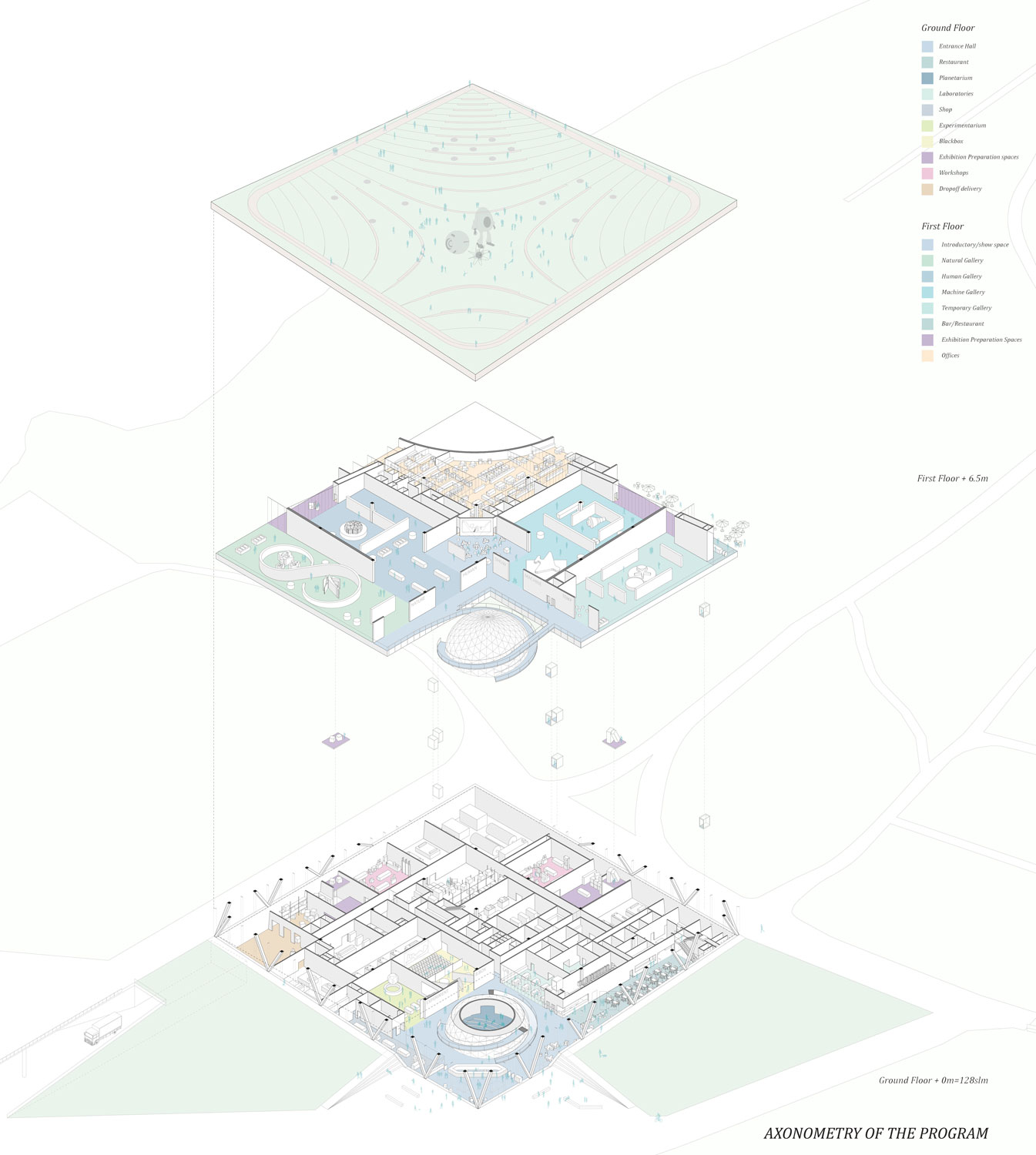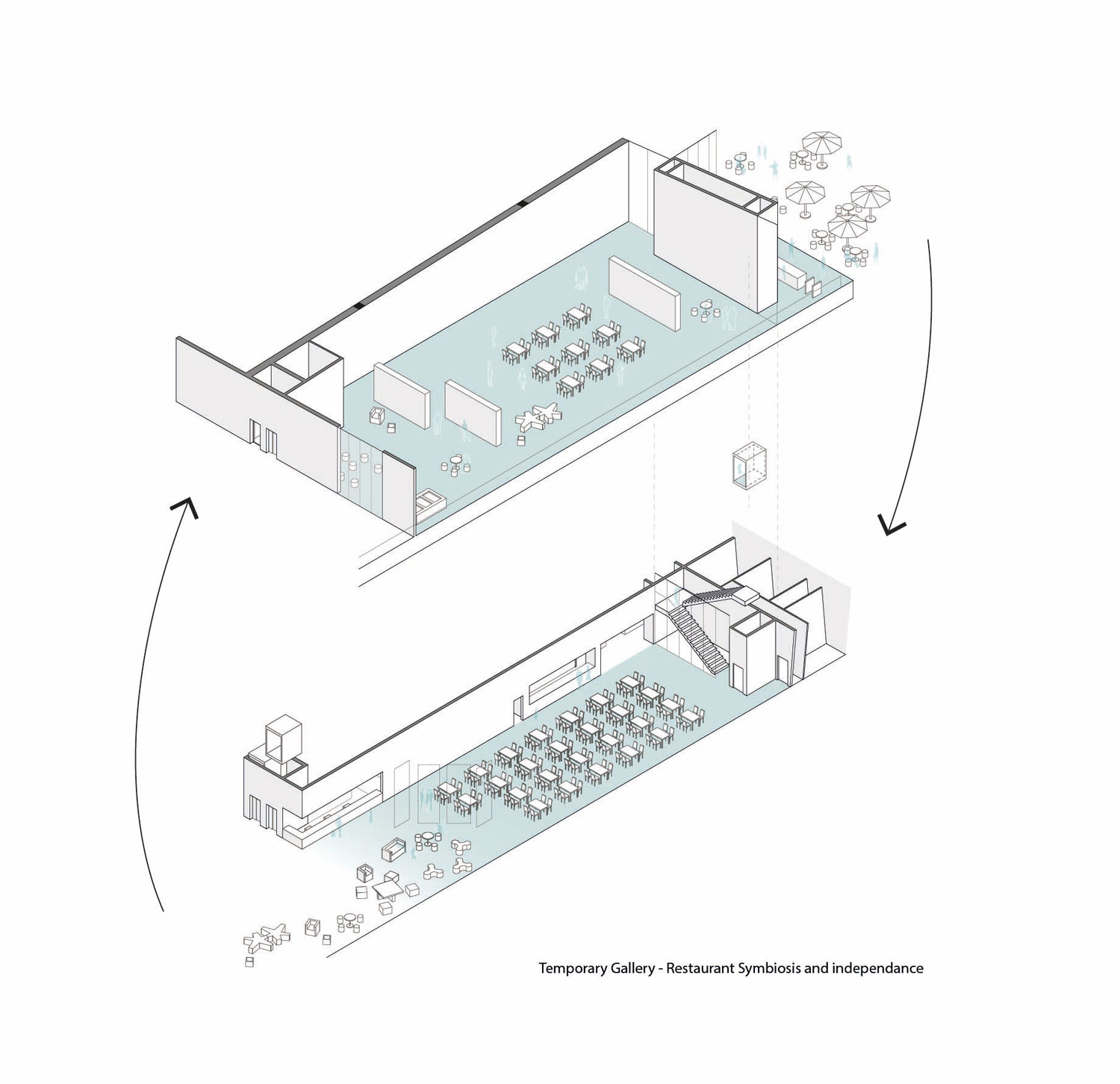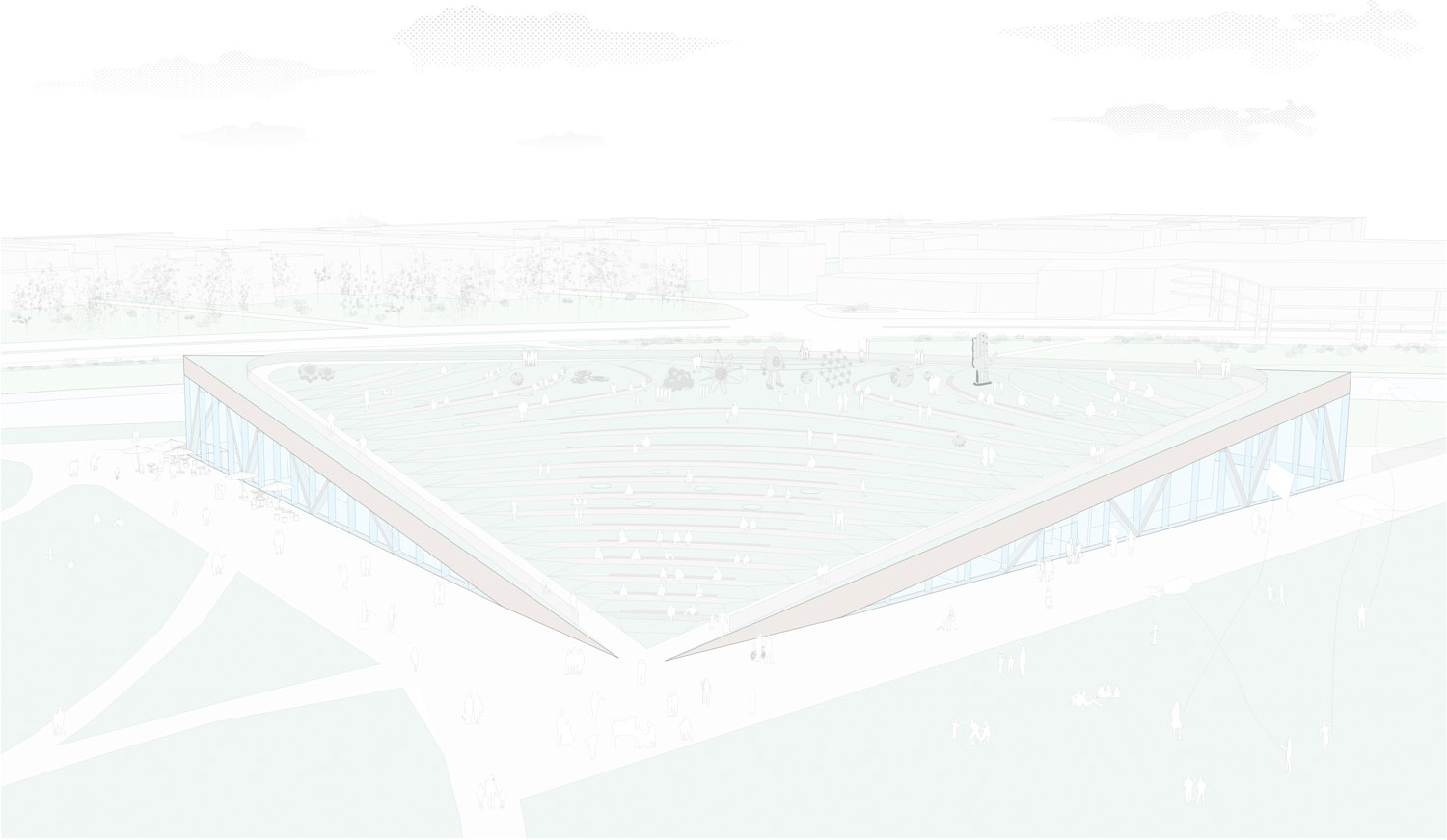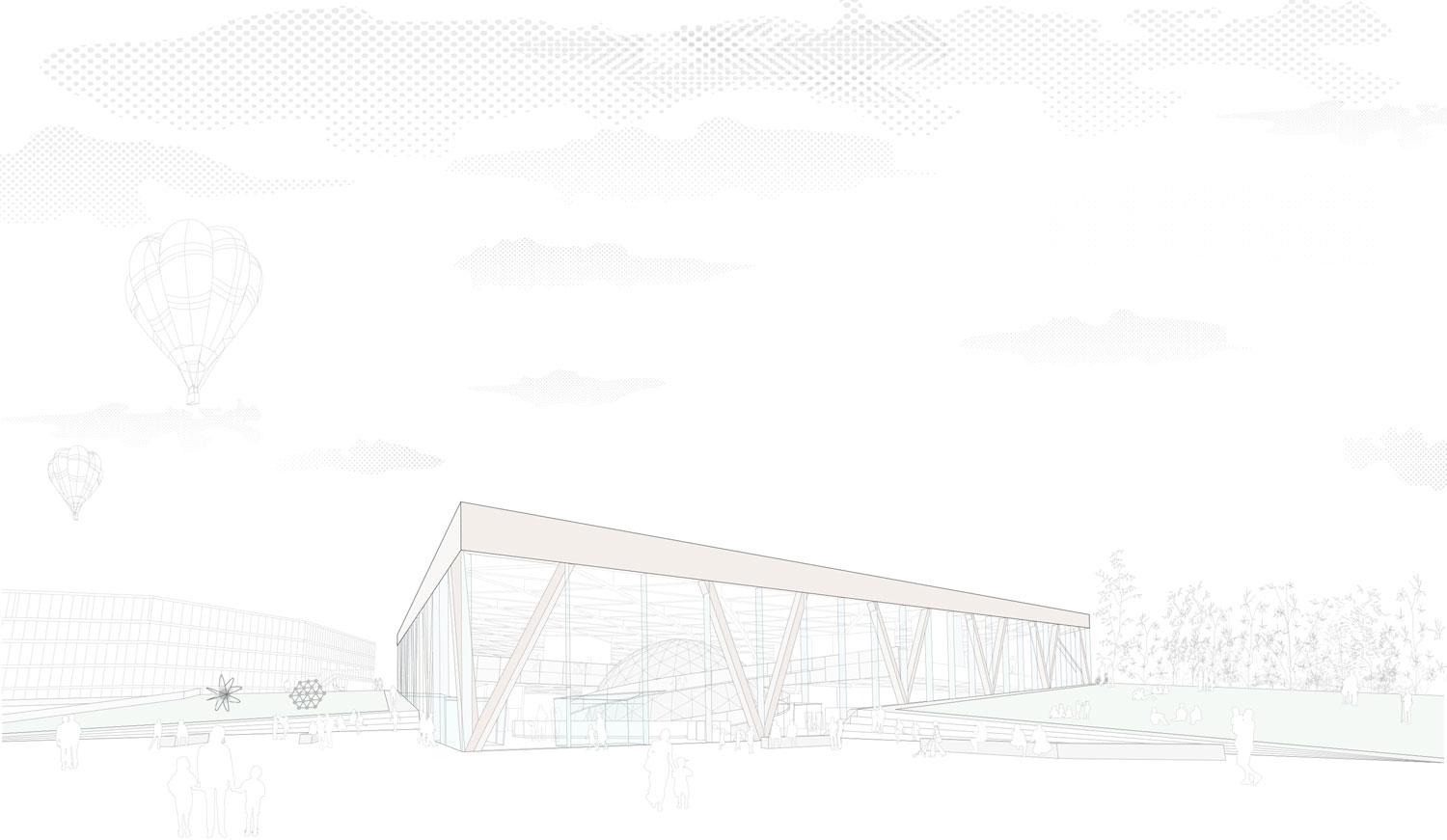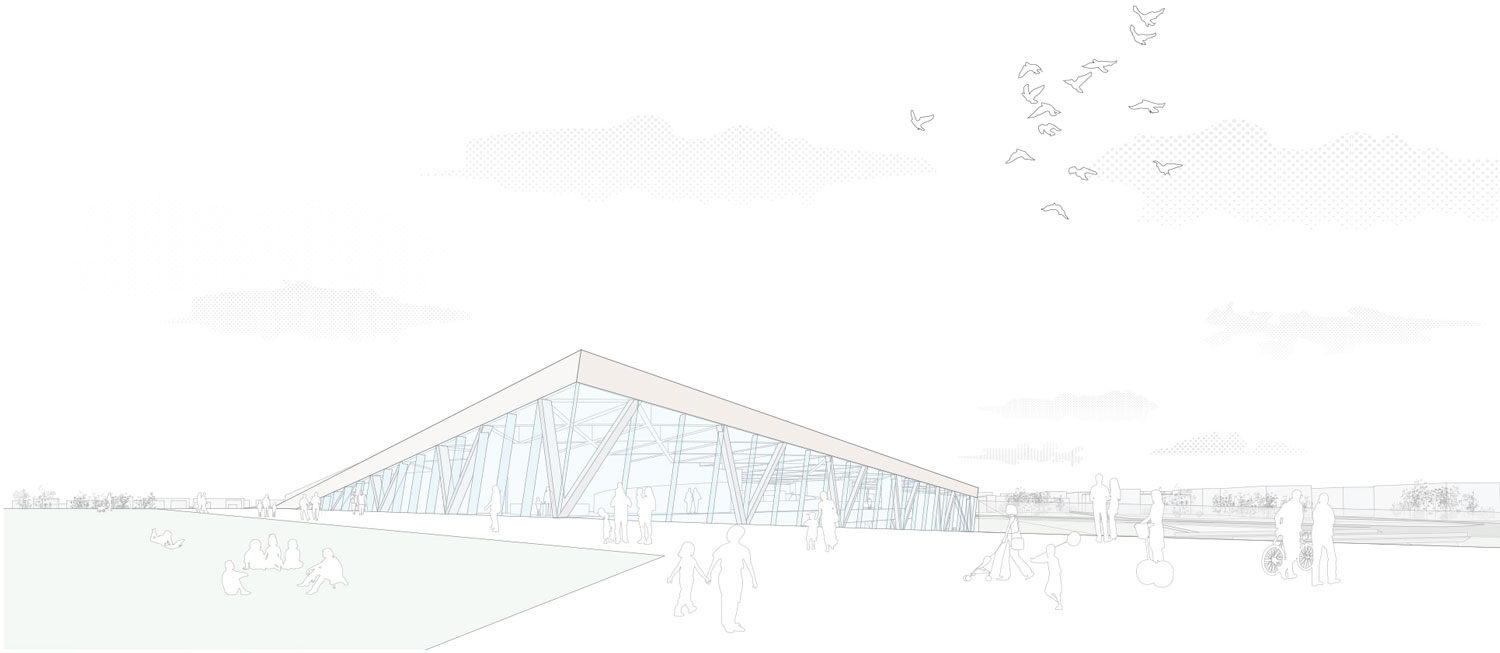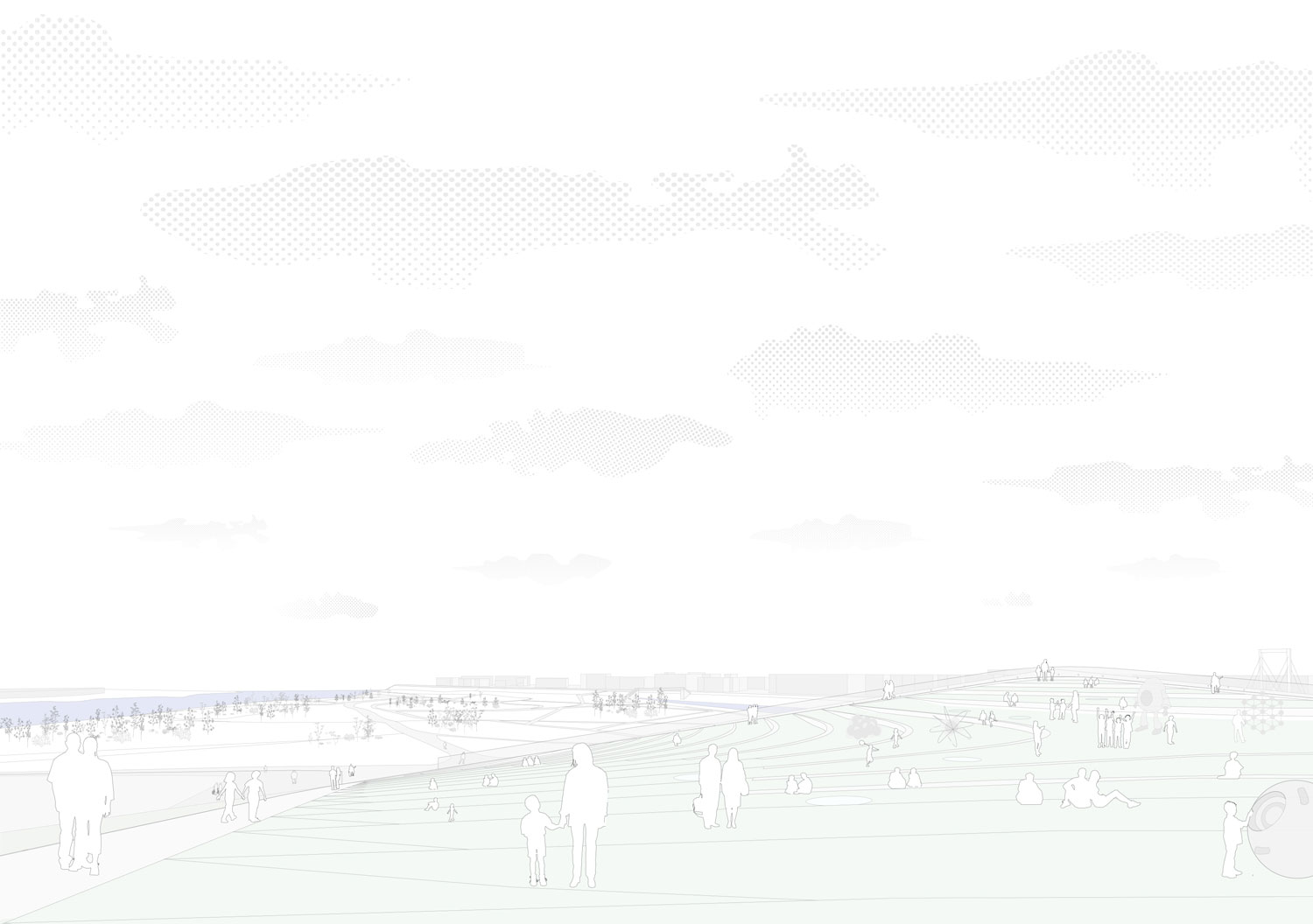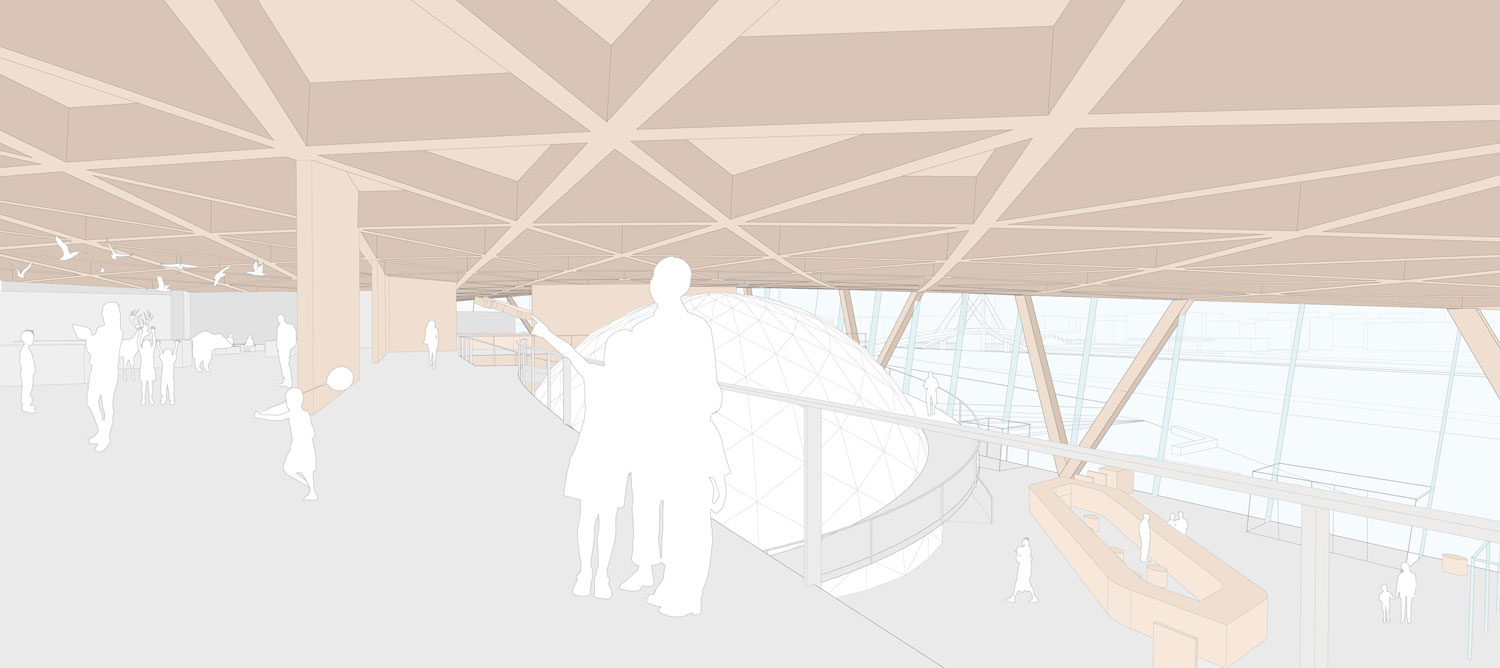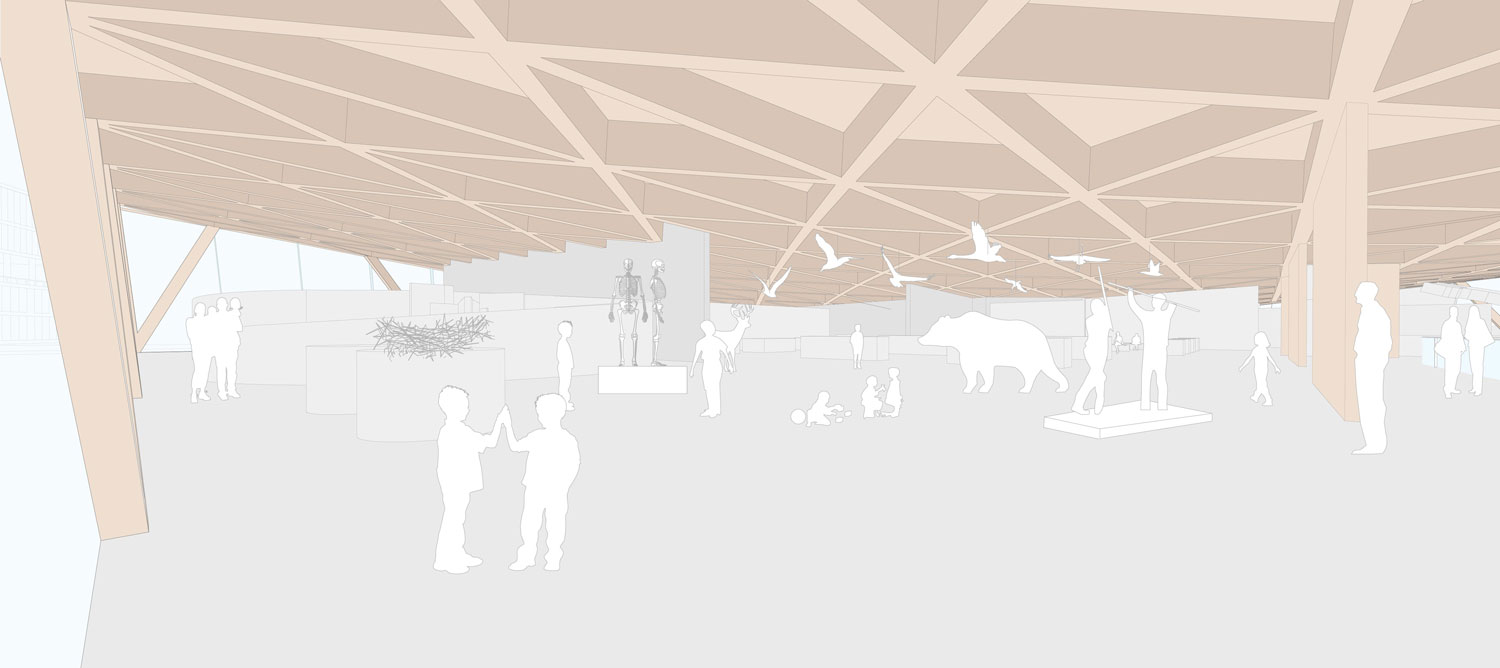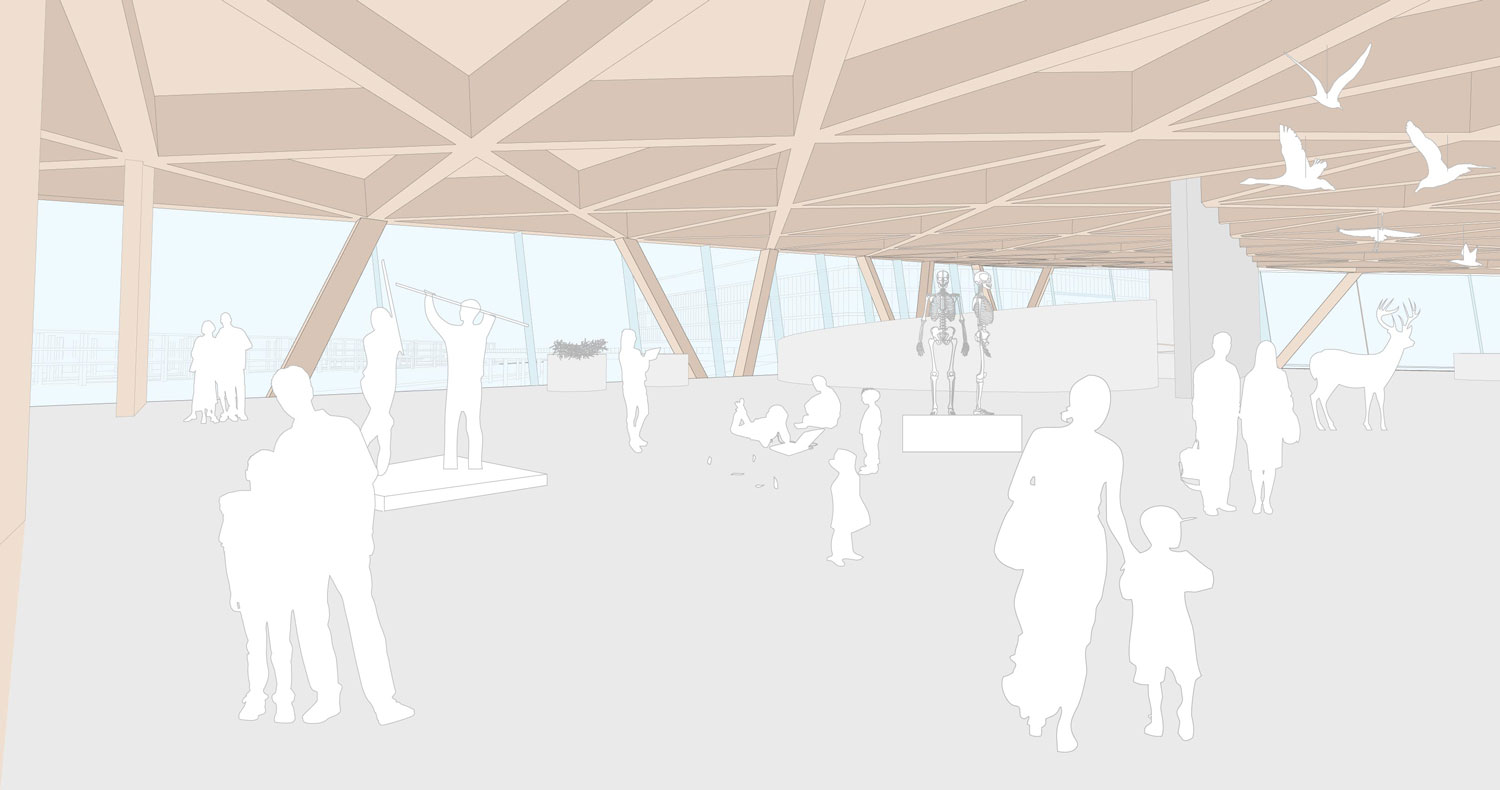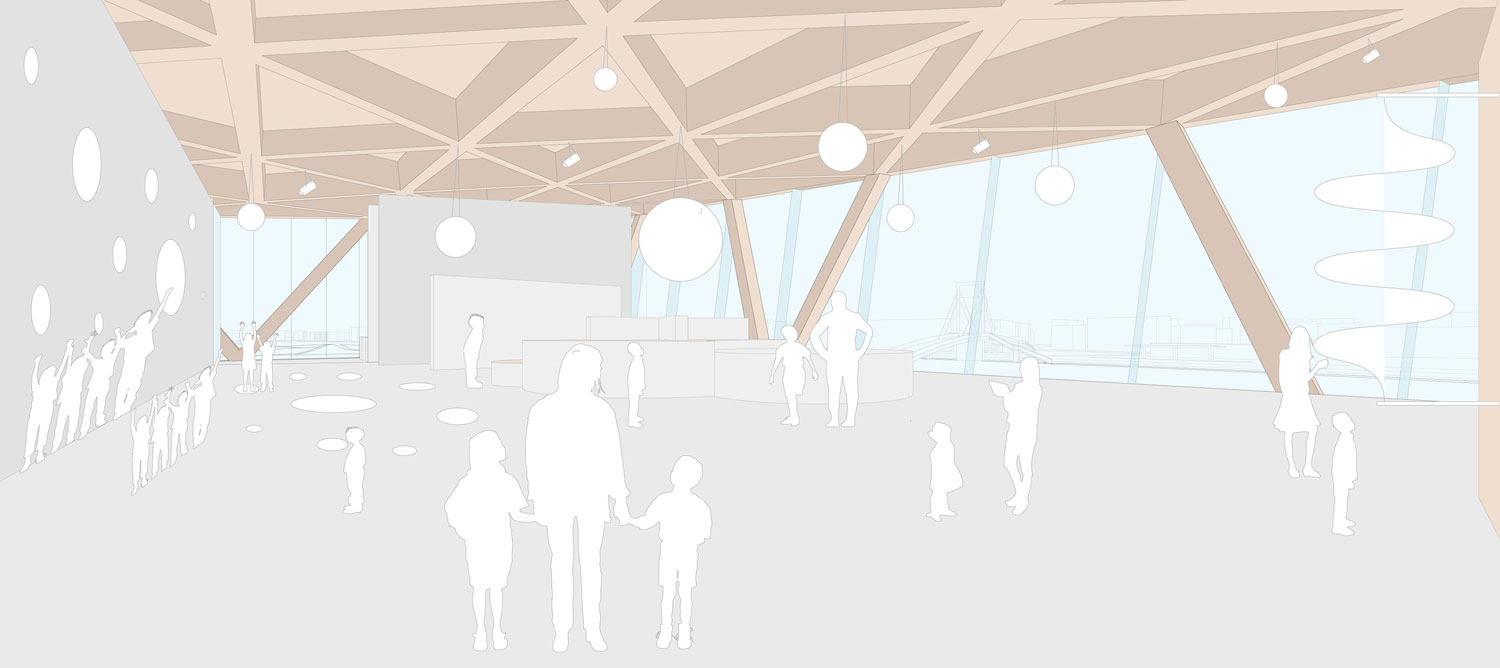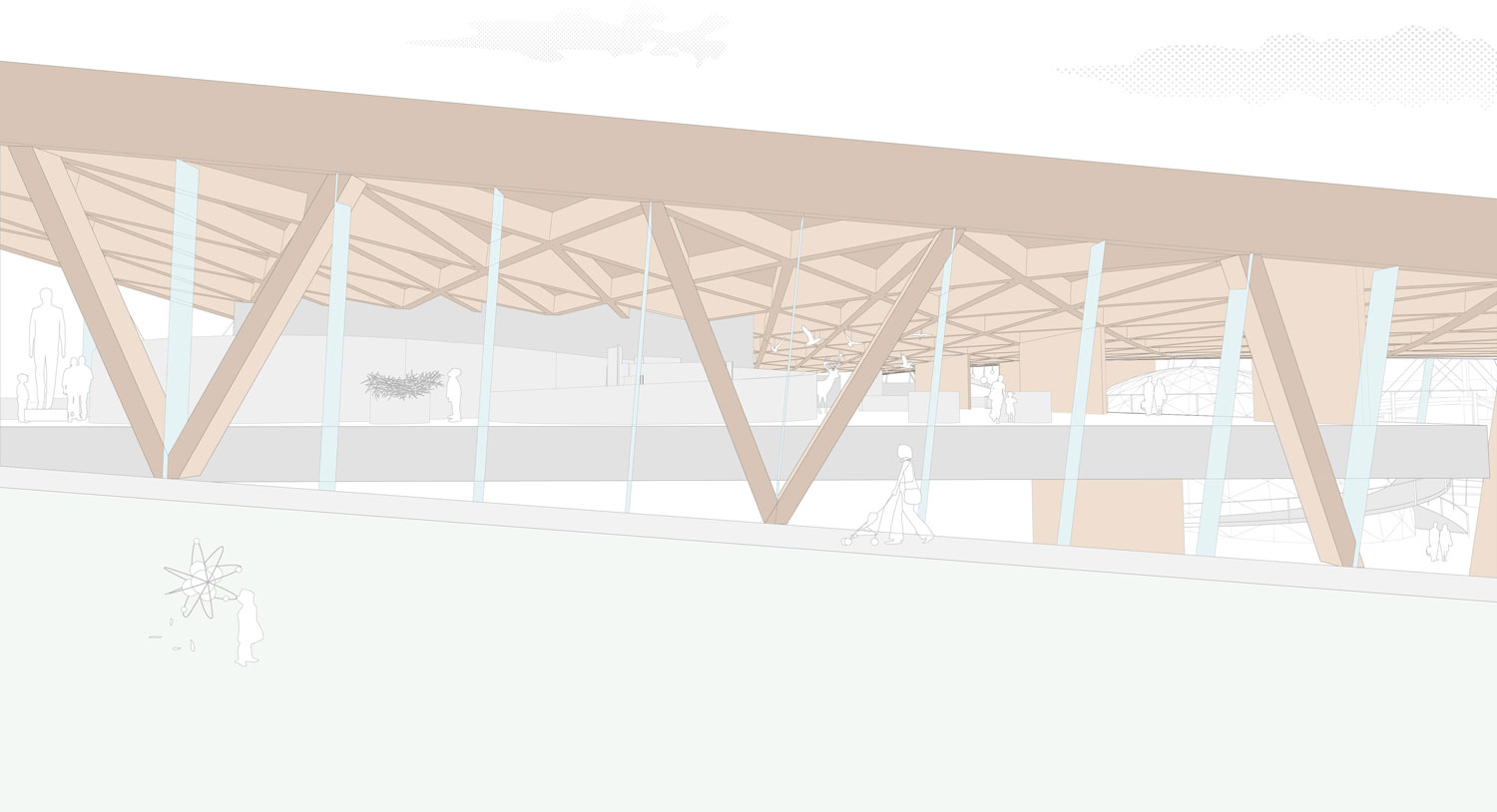1651-AZP-KUN.LT-2016
Client: Kaunas Municipality
Status: Competition (2016)
Location: Kaunas, Lithuania
Coordinates: 54.892132, 23.913633
Climate: Continental, Temperate
Material: Wood
Environments: Urban, Park
Visualizer: SBDA
Scale: 9.625 ㎡ Medium
Types: Cultural, Cultural center, Museum
When designing our proposal for the Science Centre in Kaunas, we have paid a lot of attention to its location in the Nemunas´Island and the identity of the City and the natural environment. These are the four concepts around which the urban concept of this building gravitates:
– New Viewing Platform to Kaunas. The new Science Centre in Kaunas will be a fantastic opportunity to locate a new enclave on the island from which the citizens and visitors alike will be capable to enjoy breathtaking views over the city of Kaunas. Located in the highest point on the Nemunas Island, it will enjoy almost 360°undisturbed views (except for the Zalgiri Arena). It is a perfect location to look back at Kaunas from the distance that the Nemunas Island offers as a vantage point.
– Optimizing Infrastructural Capacity. The building has been located at the best connected point in the island, virtually on the intersection between the two main bridges to the island, Micevicious and Daukanto. This is a crucial reason for its location on the Eastern side of Nemunas Island, to find the most convenient place. The availability of abundant parking facilities around the Zalgiri Arena also provides a powerful reason to place the Science Centre in the surrounding of the Arena.
– Preservation of Natural Landscape. By locating the Science Centre close to the Arena, and concentrating the buildings on the Nemunas Island, we will be able to preserve the landscape unspoilt: the whole Western sector of the Nemunas Island can be preserved as a natural environment, without any disruptions from vehicular traffic or parking facilities.
– Kaunas´s Genius Loci: Timber and Topography. In our proposal for the Kaunas Science Centre we have tried to integrate the two most important traditions of buildings in the Kaunas region: the interest for the topographical manipulations as an integral part of architecture (as we can see in the impressive Kaunas Castle) and the long tradition in timber building, which was halted during the Russian occupation but we would like to recover.
Architectural Considerations: The Horse Saddle Timber Topography
The building will sit on the Eastern side of the Nemunas Island, adjacent to the Zalgiri Arena and on the intersection between the two bridges linking the Island and the City. The building is located in a park, and takes advantage of the natural slope of the park to maximize accessibility and visual interaction on both levels of the building. We have decided for the building to be kept as low as possible so that it becomes integrated with the topography – a common trait of Kaunas traditional buildings – but also facilitating the circulations inside the centre and also making the building´s roof into a public belvedere over the city.
The extensive green roof, 81 x 81m, will become a very important landmark for the city, by becoming a distinctive topographical device, and will become a beloved enclave for Kaunas´s citizens. The gently sloped roof will create a theatrical open space suitable to host public events, or simply to enable people to look at Kaunas from a vantage point. Covered with a green roof, it will enable Kaunas´s citizens to enjoy a very pleasant environment in the roof, and the transparency of its glass facades will give people a glimpse of what is on offer in the Centre, creating a feeling of transparency and openness for those accessing the site from the city centre.
The materiality of the building, built entirely in Wood and covered in Green will ensure an empathic reception from Kaunas´ citizens. The massing of the building is very simple: We have adopted a very compact footprint, a square, in order to optimize the environmental performance of the building: In a cold climate like Kaunas, we have tried to minimize the envelope ratio to minimize environmental control costs. The building has been placed in parallel to the parking platform for the arena, ensuring that one of its corners points toward the Mickevičiaus Bridge, as the main entrance point.
The transparency of the Northern side will ensure that the public develop an immediate proximity with the building, which will appear as a huge canopy under which the Museum treasures are contained within a magically warping Pandora box. Wood, Glass and vegetation will constitute the noble material palette of the building.
Interior Space Qualities: Earthy Sciences for the Anthropocene
We have tried to depart from the customary palette of artificial materials in science centre – such as metal and polished finishes- to embrace a much more earthy and organically textured materials. Our intention is to provide a more human and natural atmosphere where the public interacts with science, an attempt to claim science as a natural property and nature as a technically constructed milieu, in the Anthropocene. We have used timber as the primary building material for the building, both for aesthetic and ecological reasons. A series of timber V-columns have been located along the 4 facades, to provide cross-bracing to the structure, while enhancing the lightness of the large roof, which is proposed to be built with a Cross-laminated Timber Gridshell, which will be a dominant pattern across the Galleries, connecting them architecturally, despite their neutral treatment. Floors throughout the building are proposed in oak timber.
This emphasis in the use of timber in buildings is a deliberate reference to the traditional buildings in Kaunas, where there is an important tradition of wooden construction which we are aiming to recall. The building has been designed on an orthogonal grid of 16.2 x 16.2m which will optimize the future flexibility of use, while providing an ideal width for exhibiting large format objects. Altogether, the footprint is a 81m square held with a 16.2m structural grid.
The plan of the building has a very clear structure where the most public areas are located on the Northeastern corner, and along the North and East sides of the volume, while the back of house functions are located around the Southwestern corner, accessible from the Zalgiri Arena carpark. It is therefore a twin core organization where the public connections and the logistic links are located around two opposite corners of the square.
The main entrance lobby is located on the Northeastern corner of the building, where the space has been left as a double height space which revolves around the Planetarium space: a mirrored sphere which contains the Planetarium while reflecting the surrounding spaces. Two anti-metric helicoidal ramps connect the foyer to the first floor galleries, Human, Machine, Nature and Temporary Galleries are all located on the upper floor, and can be lit with skylights or directly from the glazed facade. They are accessible from two cantilevered balconies that surround the Planetarium Sphere.
On the ground level, the lobby provides access to the café and bookshop, which unfold along the two North and East facades, and to the Black Block, the Experimentarium and the Research Labs. The simplicity and ideal proportion of the galleries will allow for total flexibility in the organization, proportion and geometry of these spaces.
The cafeteria and the shop are located respectively along the North and East facades of the building, in order to have a direct access to the outside after hours, but also being connected to the two exterior exhibition areas which are located on a slight slope, which will intensify the theatricality of the exhibits.
The restaurant and the temporary gallery have a separated core that allows them to complement each other and work in symbiosis. Not only the restaurant can work while the center is closed, but the temporary gallery space can beused as an extra multifunctional space for leisure events linked with the restaurant. From this lobby, all public spaces in the building can be directly accessed, which makes the circulation system remarkably simple to navigate for the visitors. The logistic facilities of the building are radiating from the Southwestern corner, where the delivery access zone will be located. All offices, workshops and plantrooms are located on this side of the building, which makes all logistic circulations very effective, through a mesh of service corridors for the back of house functions. There is no intersection between the logistic paths/personnel circulation, contained on the Southwestern corner, and the public circulation which radiates from the Northeastern corner.
The large box building typology like the one we proposed here is ideally suitable for a science and innovation centre, because of the increased adjacency between the different activities. Exterior Exhibition Spaces and Roof: Rolling Hills on a Horse Saddle Surface. The roof is inevitably one of the protagonists of this project: Not only it provides an opportunity to enjoy great views of Kaunas City from the other side of the Nemunas river, but also to locate large scale public events, working as an outdoor auditorium.
But it also plays a crucial role is establishing the identity of the building, by forming a rolling hills landscape shaped like a horse saddle Riemann´s Surface, the origin of the contemporary models of the Universe´s form. The rooftop surface connects with the natural topography on its Southwestern corner, from which the surface raises up to be able to gain sufficient head clearance to host two levels of galleries, before descending gently over the main atrium surface while providing a magnificent view over the city centre. The horse saddle shape frames the view of the Kaunas Centre between the two lifting wings, which also provide opportunities for a more theatrical open space atop the building, where large-scale events may take place.
A Sustainable Environmental Performance
The building has been designed to provide a very high environmental performance. The main strategies have been:
– Compactness. The key factor to enhance the environmental performance of the building is to reduce its envelope ratio. That is the reason to propose a squared plan proportion.
– Thermal mass/insulation. The building is encrusted in the topography. By doing so, a large percentage of the vertical surfaces is buried, and the building profits from the earth´s thermal inertia. The roof has been designed as a green roof, which adds thermal inertia and increases its insulation capacity to reach a U-Value under 0,3 W/m-K. The glazed areas of the envelope will be specified to provide a U-Value under 0,7 W/m-K, featuring triple-glazed, argon-filled panels, and Low-E coating with a G Value specified under 0,2. The ground level slab will be built in mass concrete in order to act as a thermal mass for the whole building.
– Green roofing. The 5,600m2 green roof and the additional 6,000m2 of outdoor exhibition spaces will contribute to stabilize the temperature and hygrometric levels, but also to preserve the autoctonous ecological milieu. Through the specification of native and climate-specific plants and a water-sensitive landscape design, the roof of the future science centre will contribute to preserve the natural ecosystem of Kaunas Island.
– Sustainable Energy Sources for Active Systems. A Ground Source Heating and Cooling System is recommended, using the Nemunas river water as thermal exchange mass. Wind Turbines will be installed in the surrounding landscape, both as a source of sustainable energy, and as an example of a technical object. A Combined Heat and Power Plant will be used to manage the peaks of energy consumption.
– Optimized Environmental Control Systems. The building will be specified to meet PassiveHaus Standards in terms of ventilation and heating and cooling. Due to the depth of the spaces in the Science Centre we are considering to use a radiant floor system coupled with underfloor-supplied variable ventilation system, heat recovery and free cooling. We will use Active Display Case Microclimates rather than overall climate control of the building, operated through a Building Management System.
– Installation of Control and Consumption Reduction Systems. Through LED lighting and the installation of automatic daylight sensors and occupancy sensors to dim or shut down lighting, the building´s energy consumption will be 50% lower than a standard museum building. Using low-flow plumbing fixtures, the building will consume 60% less water, compared to benchmark buildings of the same type.
– Low Embedded-Energy Construction. The building will be built mostly in wood, using locally sourced timbers. A policy of local sourcing of materials will be applied to all construction supplies.
